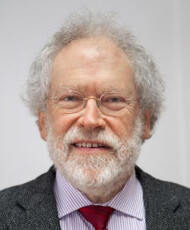The original state of the Einstein-Podolsky-Rosen paper implies a rather intricate entanglement of position and momentum. Based on that state, Bell experiments with momentum-entangled particles have been proposed by Michael Horne and Anton Zeilinger in the 1980s. These have found experimental realization for photons by Rarity and Tapster but so far not for atoms.
To perform such experiments with entanglement in the external degrees of freedom of massive particles an experiment has been set up over the last couple of years that provides the resources necessary for this: a coherent source for matter waves and a single-particle detector. The coherent source of atomic states has been achieved by cooling metastable helium atoms until they reach degeneracy in a Bose-Einstein condensate (BEC) [1]. BECs of a few million atoms at microkelvin temperatures are routinely achieved in our laboratory by now. Metastable helium was chosen to exploit the high internal energy of almost 20 eV per atom for single particle detection. A microchannel plate delay-line detector allows for time- and position-sensitive detection of individual particles. Currently, various schemes for creating momentum entanglement by collisions between atoms are studied in detail.
In addition to developing the experimental setup and tools to perform experiments on momentum entangled matter waves, also the theoretical analysis of possible experiments to show such entanglement has been performed which for example led to a proposal that is feasible with our current setup [2]. Experiments of this type will be among the first that will be performed.

[1] M. Keller, M. Kotyrba, F. Leupold, M. Singh, M. Ebner, and A. Zeilinger: Bose-Einstein condensate of metastable helium for quantum correlation experiments. Phys. Rev. A 90, 063607 (2014).
[2] J. Kofler, M. Singh, M. Ebner, M. Keller, M. Kotyrba, and A. Zeilinger: Einstein-Podolsky-Rosen correlations from colliding Bose-Einstein condensates. Phys. Rev. A 86, 032115 (2012).








